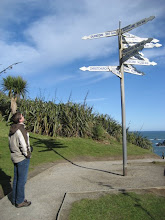Global warming wasn't directly related to my research--and my research, as it happened, wasn't directly related to my life. Therefore I was recently interested to see the scientific consensus and new information in the decade since I encountered climate data. Like my friend who wanted footnotes to the nightly news, I wanted footnotes for the film An Inconvenient Truth. I wanted to check the scales of graphs shown in the film (Are they logarithmic?) and the sources for the quotations (Are they peer-reviewed?). Consequently I purchased the book.
The book presents status of the scientific consensus as it appears in the popular press in a style similar to Harper's Index:
- Number of peer-reviewed articles dealing with "climate change" published in scientific journals during the previous 10 years: 928
- Percentage of articles in doubt as to the cause of global warming: 0%
- Articles in the popular press about global warming during the previous 14 years: 636
- Percentage of articles in doubt as to the cause of global warming: 53%
Of course, there are debates in scientific circles on particular points that the book and film present only in the form of a summary conclusion. The aim of book and film appears to be to present the basic scientific facts in a visual and memorable fashion. The complexity of the relevant thermodynamics is hidden behind the full color and large type.
At the end of the book there is a call to action, particularly to reduce carbon emissions. One of the ways is to "get around on less." Driving less is already one of my 2007 goals, as I noted when writing about simplicity and time savings.
Another of my goals related to An Inconvenient Truth is to spend six days in forest or wilderness. Several of the autobiographical sketches interspersed throughout the book and film show Al Gore's very personal appreciation for the environment. This, and his motivation for public service, have increased my respect for Al Gore while reading this book.
